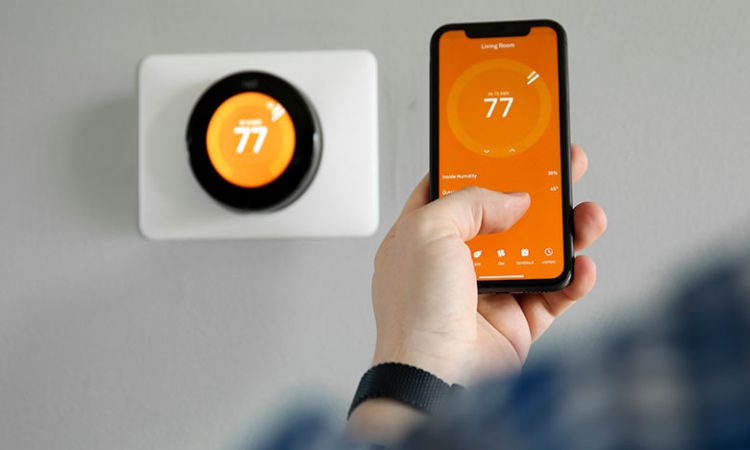 The world of HVAC has undoubtedly seen some incredible technological advances, and smart thermostats are a shining example of these improvements. These cutting-edge gadgets link up with your home’s Wi-Fi, letting you control them from anywhere using a smartphone, tablet, or computer. In this piece, we’ll delve into the realm of smart thermostats, discussing their features and advantages while examining their impact on HVAC systems and energy use.
The world of HVAC has undoubtedly seen some incredible technological advances, and smart thermostats are a shining example of these improvements. These cutting-edge gadgets link up with your home’s Wi-Fi, letting you control them from anywhere using a smartphone, tablet, or computer. In this piece, we’ll delve into the realm of smart thermostats, discussing their features and advantages while examining their impact on HVAC systems and energy use.
A Closer Look at Smart Thermostats and Their Capabilities
Smart thermostats certainly take things up a notch when compared to their traditional counterparts. Thanks to remote capabilities, you can tweak temperature settings and monitor energy consumption from virtually any location. Utilizing intelligent learning algorithms, these clever devices get to know your personal preferences, crafting customized heating and cooling routines just for you. They also provide detailed energy reports that help you understand your energy habits and make informed choices for your household. Additionally, they can employ geofencing technology to determine when you leave or return home, adjusting the temperature settings as needed. These smart thermostats seamlessly integrate with your broader smart home network, allowing them to interact with other devices like lighting and security systems.
Benefits of Smart Thermostats
The adoption of smart thermostats brings several benefits to homeowners and the environment. Firstly, they significantly reduce energy consumption by optimizing heating and cooling based on occupancy patterns and user preferences. This translates into lower utility bills and reduced carbon footprints. Smart thermostats provide precise and consistent temperature control, ensuring a comfortable home environment regardless of external weather conditions. With remote access, homeowners can conveniently monitor and control their HVAC systems from anywhere, allowing for greater flexibility and energy savings. Customizable scheduling options enable different temperature profiles to be set throughout the day or week, ensuring comfort when needed and energy efficiency when not. By optimizing HVAC system operation, smart thermostats reduce wear and tear on equipment, potentially extending its lifespan. Moreover, the reduced energy consumption associated with these devices contributes to environmental sustainability by lowering greenhouse gas emissions.
Installation and Compatibility
When considering smart thermostat installation, it is important to ensure compatibility with your existing HVAC system and the availability of necessary wiring. Some models require a common wire (“C-wire”) for power, while others operate on battery power alone. Seeking professional guidance from an HVAC technician or following manufacturer guidelines will help ensure proper installation and compatibility. Professional installation can also optimize performance and facilitate integration with other smart home devices.
Smart thermostats have revolutionized HVAC technology, offering homeowners greater control, energy savings, and personalized comfort. With features such as remote access, learning algorithms, and customizable scheduling, these devices bring convenience and efficiency to home climate control. The reduced energy consumption associated with smart thermostats benefits both homeowners and the environment, lowering utility bills and carbon footprints. As the world embraces smart technology, smart thermostats are becoming essential tools for creating smarter, energy-conscious homes. Consider upgrading to a smart thermostat and take advantage of the benefits they offer in terms of comfort, convenience, and environmental responsibility.


